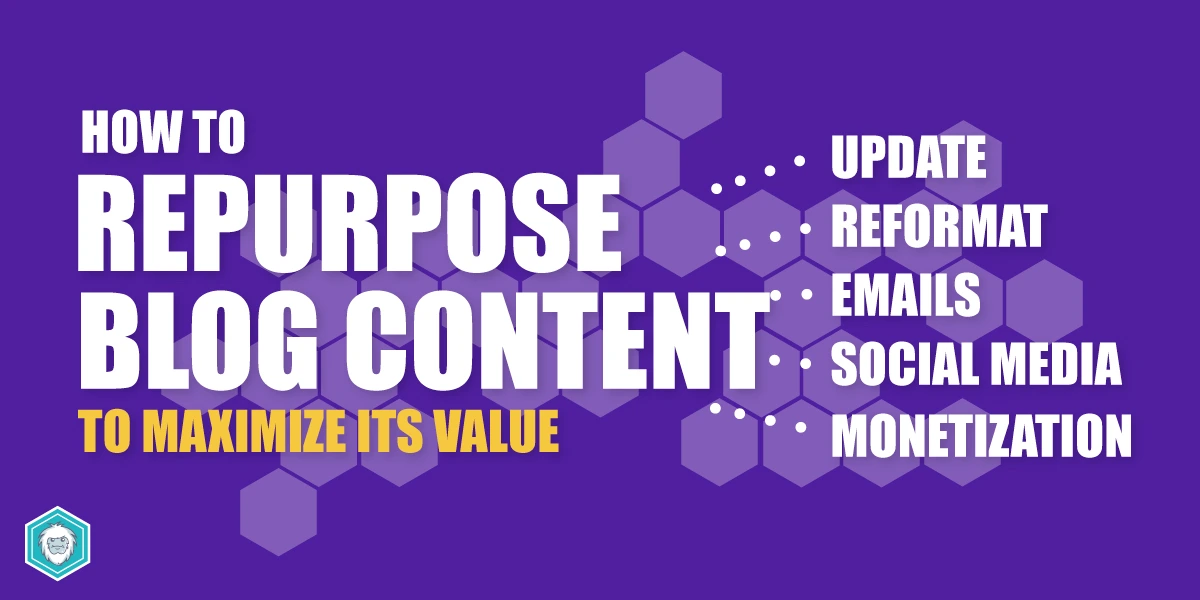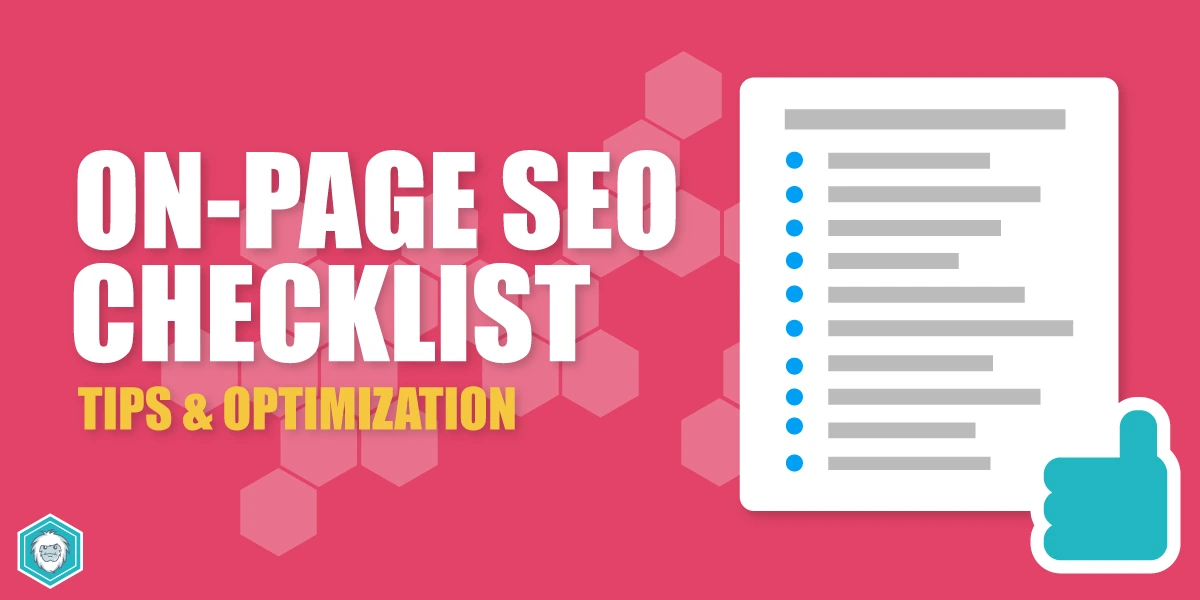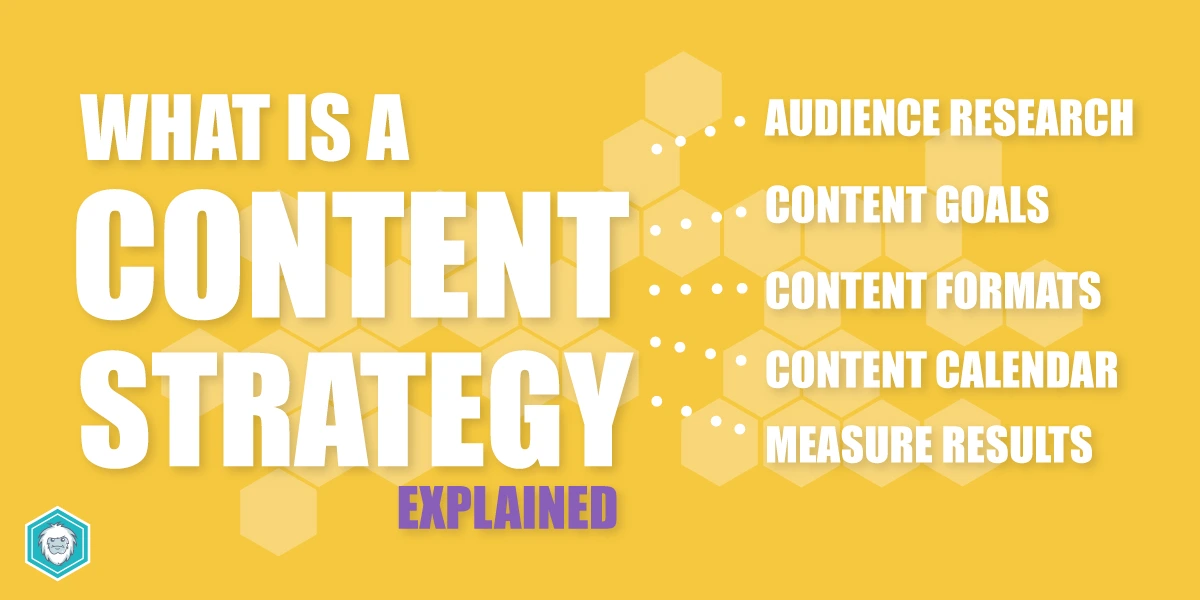How to Repurpose Old Blog Content – 12 Ways to Get More Value
If you’ve been blogging for a while, there’s a strong chance that you have a collection of old posts sitting on your site gathering little traffic. But just because a post is old doesn’t mean it’s useless! In fact, repurposing old blog content is one of the smartest and easiest ways to get more traffic, improve SEO, and keep your audience engaged, without starting from scratch.
Through refreshing, reformatting, and redistributing your existing content, you can maximize the lifespan and value of your posts.
Read on to explore 12 ways you can breathe new life into your old blog posts and turn them into fresh opportunities to help grow your traffic.

Key Takeaways:
- Updating outdated information and fixing broken links can boost rankings and user experience.
- Reformat by turning blog posts into videos, infographics, social media content, or email sequences helps attract a wider audience.
- Merging similar articles can create a powerhouse resource – Combining multiple posts into an in-depth guide improves SEO and makes content more valuable.
- Social media resharing keeps content alive – Posting updated articles with fresh captions, graphics, and hashtags can drive engagement from new audiences.
- Email sequences and lead magnets provide ongoing value – Transforming posts into mini-courses, eBooks, or checklists can help grow your email list.
- Monetization opportunities exist in old content – Adding affiliate links, updating sponsorships, and optimizing high-traffic posts can generate additional revenue.
- Content syndication expands visibility – Republishing on platforms like Medium, LinkedIn, or Quora can attract new readers and drive more traffic.
- Repurposing is a smart way to maximize effort – Instead of creating from scratch, optimizing and reusing existing content saves time while delivering results.
#1. Refresh and Update Outdated Information
Regularly updating your old content is one of the best ways to keep it from going stale. Your readers will appreciate accurate, up-to-date information, while search engines also love fresh content.
Take a look at your older blog posts and:
- Update outdated stats, facts, and references. For example, if you wrote a guide on social media marketing in 2018, update it with the latest trends and algorithms from 2025.
- Replace broken links or outdated external sources. Imagine a post recommending a project management tool that no longer exists, swap it out for a modern alternative.
- Improve readability and formatting for a better user experience. If an old post is a wall of text, add subheadings, bullet points, and images to break it up.
- Add new insights, trends, or case studies to make the post more valuable. If you once shared a personal success story, include an update on what has changed since then.
#2. Improve SEO for Better Rankings
If an old post isn’t ranking well, a few strategic SEO tweaks can make a huge difference:
- Optimize the title and headers with relevant keywords. For instance, a post titled “Best Productivity Tips” might perform better as “15 Productivity Hacks to Work Smarter in 2025.”
- Rewrite the meta title and description for better click-through rates. If your old meta description was vague, craft a more compelling one that highlights a key benefit.
- Add internal links to newer, high-performing content. For example, link an old blog post about content marketing to your latest guide on SEO strategies.
- Ensure the content follows current SEO best practices, such as including structured data or featured snippet optimization. If a list-style post isn’t appearing in Google’s featured snippets, reformat it with clear headers and bullet points.
#3. Repurpose Content into Different Formats
Not everyone consumes content the same way. Which is why, when you repurpose your blog posts into different formats, it can help reach a broader audience:
- Turn a long-form post into an infographic. For example, transform a detailed “How to Save Money” guide into a visually engaging Pinterest infographic.
- Create a YouTube video or podcast episode covering the same topic. If you wrote a post on time management, record a short podcast episode discussing your top tips.
- Break down key points into bite-sized social media posts. Convert a “10-Step Marketing Plan” into a LinkedIn carousel post highlighting each step.
- Convert blog content into an email newsletter. If an article on ‘freelance pricing strategies’, for example, got a lot of pageviews, then send it to your email subscribers with additional insights.
Related: How to make an Infographic
#4. Merge Similar Articles Into a Comprehensive Guide
If you have multiple old posts covering similar topics, consider merging them into a more in-depth, high-value guide. This can:
- Enhance user experience by reducing fragmented content. Instead of multiple short posts on beginner photography tips, create an ultimate guide.
- Improve search rankings by consolidating authority on a topic. A set of scattered SEO tip articles could become one powerhouse resource titled “The Ultimate SEO Handbook.”
- Create an opportunity to attract backlinks and social shares. People are more likely to share a well-structured, comprehensive resource than a single short post.
#5. Repost and Share on Social Media
Just because a post is old doesn’t mean it’s irrelevant. Reshare updated posts on your social channels to reintroduce them to your audience:
- Schedule posts on Twitter, LinkedIn, Facebook, and Instagram. For example, share an old blog post about work-from-home setups with a fresh caption discussing recent trends.
- Use relevant hashtags and trending topics to increase reach. If an article on remote work aligns with a trending discussion about digital nomads, use the right hashtags to gain visibility.
- Create new graphics or quote cards for a fresh look. Turn key takeaways from a blog post into engaging Instagram stories or Pinterest pins.
#6. Turn It Into an Email Sequence
If your blog has valuable evergreen content, why not turn it into an email series? You can:
- Break long posts into multiple emails for a mini-course. For example, turn a detailed “How to Start a Blog” guide into a 5-day email sequence.
- Send updated versions to your email list. If a past email about productivity hacks got great engagement, refresh and resend it with new insights.
- Offer it as an exclusive resource in exchange for email signups. Repurpose an old post into a downloadable PDF checklist for lead generation.
#7. Turn Old Blog Posts Into Lead Magnets
You can transform old content into valuable resources to grow your email list:
- Compile related posts into an eBook. If you’ve written multiple articles on SEO, bundle them into a guide called “Mastering SEO for Beginners.”
- Create checklists or templates based on your post. For example, turn a content marketing strategy post into a downloadable content calendar template.
- Offer an exclusive worksheet to help readers take action. An old blog post about goal setting could become a printable goal-setting planner.
#8. Monetize Old Content with Affiliate Links
If your blog has posts that discuss products or services, revisit them to:
- Add relevant affiliate links where appropriate. For instance, an old post about website hosting could include new affiliate links to top hosting providers.
- Replace outdated recommendations with better alternatives. If a product review is no longer relevant, swap it out for a more competitive option.
- Enhance product mentions with updated pricing or discount offers. A post about the best email marketing tools could now include a limited-time coupon code.
#9. Submit to Content Aggregators and Syndication Platforms
Expand your reach by submitting your old content to:
- Medium or LinkedIn Articles for additional exposure. Repurpose a high-performing post into a LinkedIn article with a fresh perspective.
- Reddit or Quora to drive targeted traffic. Answer relevant questions by linking back to your old blog posts where appropriate.
- Industry-specific syndication platforms like GrowthHackers or BizSugar. A marketing-focused post could find new life on sites dedicated to digital marketing professionals.
#10. Turn Blog Posts Into Lead Magnets
Some blog posts can be transformed into downloadable resources that provide extra value to your audience while helping you grow your email list. For example:
- Ebooks – If you have a series of posts on “Beginner’s Guide to SEO,” compile them into a well-designed eBook titled “SEO Essentials: A Step-by-Step Guide for Beginners.”
- Checklists or Templates – Convert a detailed productivity guide into a “Daily Productivity Checklist” or a “Content Marketing Calendar Template” to help readers take action.
- Webinars and Slide Presentations – If you wrote a blog post about “How to Start a Profitable Online Business,” turn it into a webinar with additional insights and a live Q&A session.
Offering these resources in exchange for email signups helps build your list while repurposing existing content into valuable lead-generation assets.
#11. Translate Your Content for a Global Audience
If you attract international visitors, consider translating your top-performing posts into other languages to reach a broader audience. For example:
- A blog post about “Freelancing Tips for Beginners” could be translated into Spanish (“Consejos para Principiantes en el Trabajo Freelance”) and promoted to Spanish-speaking readers.
- If you run a tech blog, translating a guide like “Best WordPress Plugins for SEO” into French or German could attract non-English-speaking website owners looking for SEO advice.
- Use tools like Google Translate for quick translations, or invest in professional translation services for better accuracy and localization.
When you expand your content to multiple languages, you can increase your global traffic and overall engagement.
#12. Monetize Your Old Content
Your old posts might hold hidden revenue potential. Revisit them with these monetization strategies:
- Adding affiliate links where relevant – If you wrote a post about “Best Email Marketing Tools,” update it with affiliate links to Kit, Mailchimp, or ActiveCampaign.
- Updating old sponsorships with new partnerships – If a past post featured a sponsored mention of an outdated tool, reach out to new brands for fresh sponsorship deals.
- Turning high-traffic posts into product or service landing pages – If an old post on “How to Start a Podcast” is still getting traffic, add a call-to-action (CTA) for your podcasting course, coaching service, or related digital product.
Summing Up: Leverage Your Content Strategy for Maximum Growth
Your old blog posts don’t have to sit in the archives collecting digital dust. With the right repurposing strategies you can breathe new life into your blog posts helping drive fresh traffic and maximize their value.
Whether updating outdated information, repurposing content into new formats, or optimizing for SEO, every small tweak can lead to better results.
Why let your best posts fade away? Dust off, refresh, and reshare your old content to keep it working for you longer, build your brand’s credibility, and draw in new eyes.
Now grab those archived blog entries, give them a fresh spin, and watch them turn into powerful growth tools for your small business!




